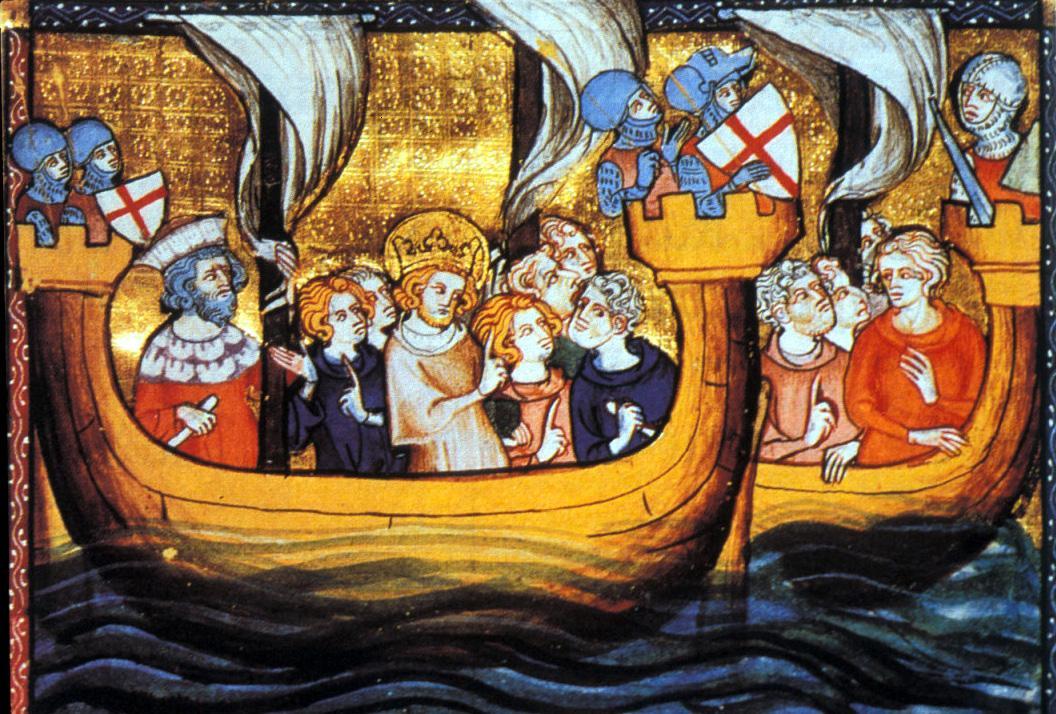The hagiographical myth of Saint Louis compared to the image, which he himself floated, has for a long time been at the centre of a scholarly dispute. In her generous work, Gaposchkin has shown that even the hagiographers did not agree
The Making of Saint Louis: Kingship, Sanctity, and Crusade in the Later Middle Ages
By M. Cecilia Gaposchkin
Cornell University Press 2008
ISBN-10 0801445507
ISBN-13 978-0-8014-4550-7
Blessed Louis. The Most Glorious of Kings. Texts Relating to the Cult of Saint Louis of France.
By M. Cecilia Gaposchkin (Ed) and Phyllis B. Katz (Transl)
University of Notre Dame Press 2012
ISBN-10: 0268029849
ISBN-13: 978-0268029845
The Sanctity of Louis IX
Early Lives of Saint Louis by Geoffrey of Beaulieu and William of Chartres
Translated by Larry F. Field
Edited by M. Cecilia Gaposchkin and Sean L. Field
Cornell University Press 2013
ISBN-10 080145137X
ISBN-13 978-0-8014-5137-9
There is no doubt that the sanctification of Blessed Louis was the result of a carefully laid plan by the family of the French king, which involved a number of parties. This process comprised the writing of the first vita by his Dominican confessor, Geoffrey of Beaulieu, as well as careful inquiries into Louis’ sanctity by another ecclesiastic and later Pope, Simon de Brie. Around 1275 – 80 yet another vita by William of Chartres was composed. Finally in March 1283 the formal inquest was initiated. At this inquest friends and relatives were called to testify. However the official sanctification was delayed until it was politically interesting for Rome to offer it as part of a set of concessions. It took nevertheless nearly another decade before the solemn translation of part of his relics from St. Denis to Sainte-Chapelle. At the same time other parts of his remains were packaged and presented to those religious institutions, which had been founded or furthered by Louis.
Already in a ground-breaking book from 2008 she demonstrated how the different religious institutions used these religious genres to develop different images of the way in which Louis had behaved saintly. “Louis personified different values to different constituencies, institutions and individuals, in ways that were motivated by the religious and spiritual ideals of the later Middle Ages”, she writes (p. 243). In her detailed and very acute readings of some hitherto unused texts – liturgies and sermons – she demonstrates how for instance the Franciscans focused on his piety and active devotion, while the Capetian Royal family stressed his image as the most Christian King combining royal sanctity and sacral kingship (the title of chapter 4).
However, through these different ways of unpacking a saint to the wider public, she also demonstrates how complicated it was to construe these different images. As an undercurrent in the life of Louis was never just his piety but also his masterful play-acting as a noble knight and crusader. The different constituencies might have tried to “market” their different sets of ideas about how to get a grasp of the saintly Louis. In reality he seems to have had a rather more complex personality. In the end this was probably his passport into a long and very complex story as the – at the same time – both Royal, French and Christian saint par excellence. Even today his legacy is the subject of political spin, when the French Royalists note with glee that one of their scions, the Count of Paris, was present at the official opening of the exhibition occasioned by the 800-anniversary of his birth.
This is a very generous book insofar as it not only presents the reader with an introduction to types of texts not often sourced. She also demonstrates how to use these texts as well as presents the reader with bountiful snippets.
Finally in recent follow-ups she has edited some of the more central texts in two companion volumes, where both the Latin texts and careful translations have been made available for the student. These are a real treat.
Karen Schousboe
ABOUT THE AUTHOR:
Cecilia Gaposchkin received her Ph.D. from Berkeley in 2001. She works on late medieval French cultural history, and has published on the intersection between politics, kingship, and representation. Her first book, The Making of Saint Louis (IX) of France: Kingship, Sanctity and Crusade in the Later Middle Ages, was published with Cornell University Press in 2008 (paperback ed. 2010). She is also the author of Blessed Louis, The Most Glorious of Kings: Texts relating to the Cult of Saint Louis of France (Notre Dame: 2012), and, with Sean Field and Larry Field, The Sanctity of Louis IX: Early Lives of Saint Louis by Geoffrey of Beaulieu and William of Chartres (Cornell: 2014). She is now working on a devotional history of the crusades, tentatively entitled “Crusade, Liturgy, Ideology, and Devotion: 1050-1400.” She also serves as the Assistant Dean of Faculty for Pre-Major Advising.
